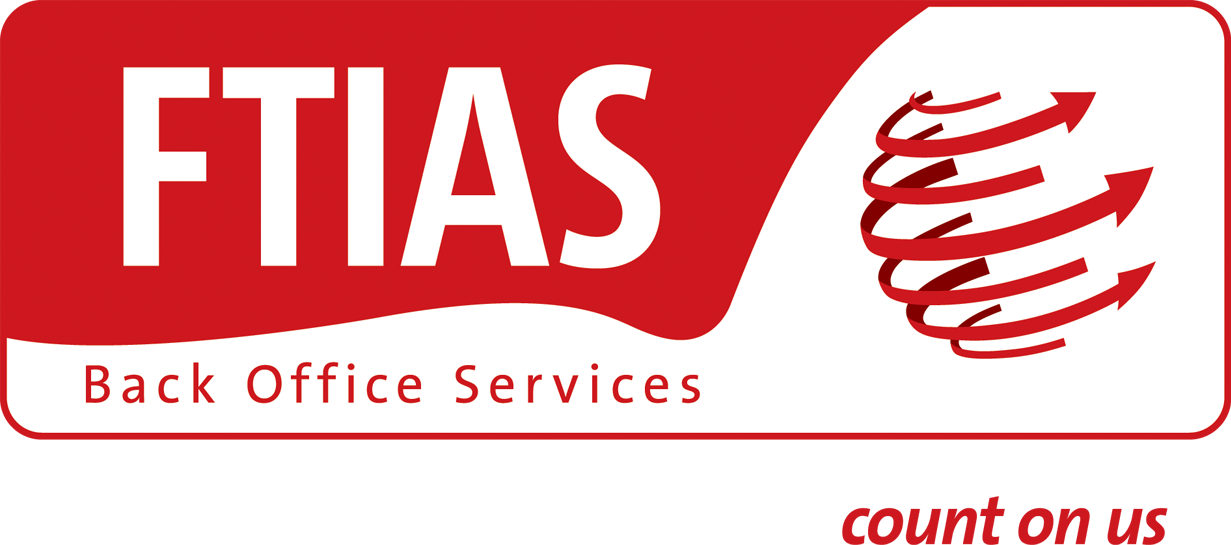Read More
Find quick answers to commonly asked questions in our FAQs.
If you have any additional questions, please don't hesitate to reach out to us.
- How should we send the invoices?
-
All invoices should be sent via E-mail. Kindly refer to the signed Contract - for further information - covering the E-mail addresses to be used and well as the contact person responsible for your Account.
- File format
Ideally, a fiscal invoice is sent in .PDF format, accompanied by a detailed invoice preferably in either an Excel (.XLS) or (.XLM) formats. The (.PDF) format document should contain the fiscal Invoice summarising all charges whilst, meeting the following legal requirements:- Unique, consecutive invoice number
- The date of when the invoice was issued
- Company name, full address, and VAT number of Supplier
- Our Company name, full address, and VAT number
- The quantity and type of the supplied goods/services
- The total invoice amount, including the taxable amount and the VAT amount
- The VAT rate or a reason for applying an exemption (export, reverse charge, intra-community supply)
- Invoice currency
- File size
Sometimes when an invoice is scanned using very high resolution, the resulting file becomes very large. This makes it difficult and takes even longer to travel via E-mail and get delivered by internal mail servers. The maximum file size that should be provided for an invoice should not exceed 500k. A normal invoice scanned in .jpg or .pdf is usually under 200k. High resolution scanning is usually used to scan non-text documents such as photos or images and this is therefore not required for invoices or text documents. Compression: If you are sending more than one file it is recommended that a compression tool such as WinZip or WinRAR is used to send the files. Again this will reduce even further the file size, and can be sent as one attachment. - Compression:
- If you are sending more than one file it is recommended that a compression tool such as WinZip or WinRAR is used to send the files. Again this will reduce even further the file size, and can be sent as one attachment.
- Email Layout
A clear and concise mailing process is recommended to ensure smooth collaboration. We highly suggest that any documentation is attached to the E-mail, rather than having it pasted in the body of the E-mail as text format. Ideally E-mails are sent in accordance to the mailing list (*) previously mentioned and are not forwarded twice to the same (or other different) recipients.
- File format
- How is the Early Booking Discount Prepayment calculated and deducted?
-
There are two different methods how the Early Booking Discount (EBD) Prepayments are calculated:
Seasonal Prepayment: This is a prepayment that is paid on a fixed date and that covers arrivals for the whole season. This prepayment is calculated for all bookings made until a particular reservation date and which stay falls in a particular period. The details of the EBD prepayment are found on the contract. The prepayment will be deducted in instalments (usually monthly). The deductions are included in the supplier‘s invoices payment. E.g. Prepayment due on the 15.11.08, for all reservations made until 31.10.08, which stay falls in period starting 01.11.08 till 30.04.09.
Monthly Prepayment: We have two types of EBD‘s for which we issue a monthly prepayment:
Fixed Reservation Date: This is when the reservation date is the same (fixed date) for all the months. E.g. Reservation date is 31.10.08: On the 05.11.08 we issue a prepayment for all reservations made until 31.10.08, which stay falls in period starting 01.11.08 till 30.11.08. On the 05.12.08 we issue a prepayment for all reservations made until 31.10.08, which stay falls in period starting 01.12.08 till 31.12.08. In this example, the prepayment which was paid on 05.11.08 will be deducted from the supplier‘s invoices payment related to November invoices.
Rolling Reservation Date: This is when the reservation date is based on the arrival date. E.g. Reservation date is 60 days prior to arrival: On the 05.11.08 we issue a prepayment for all reservations made until 30.09.08, which arrival falls in period starting 01.11.08 till 30.11.08. On the 05.12.08 we issue a prepayment for all reservations made until 31.10.08, which arrival falls in period starting 01.12.08 till 31.12.08. In this example, the prepayment which was paid on 05.11.08 will be deducted from the supplier‘s invoices payment related to November invoices. - What information is required for bank details?
-
Supplying the full and correct bank details is vital in order to avoid any complications with the payment transfers. Therefore we always request the following details in order to have all the information available, as might be requested by our banking partners.
- Beneficiary Name (Account Name)
- Bank Name and Bank Address
- Bank Account Number and IBAN (where available)
- SWIFT Code
- Sort Code (UK Banks Only)
- ABA Number – Routing Number (USA Banks Only) - Do I need to send the original voucher with the invoice?
-
Normally, we do not need the original (or copied) vouchers if all the information related to a particular booking is included on the invoice. Nevertheless, in cases when our records do not match the ones mentioned on the invoice, we would require a copy of the voucher to verify which details are correct.
- What is a shortpayment?
-
A shortpayment is the discrepancy between the amount shown on the supplier‘s invoice and the amount according to records. In such cases we pay the booking as per our records and in the remittance advice we include a comment that explains our calculation. Please see the remittance advice section for further details regarding short payments.
- What information is required for bank details?
-
Supplying the full banking details are vital, to avoid any complications with the payment transfers. As requested from our banking partners, all the below requirements need to be updated in the signed seasonal agreement:
- Beneficiary Name (Account Name)
- Bank Name and Bank Address
- Bank Account Number and IBAN (where available)
- SWIFT Code
- Sort Code (UK Banks Only)
- ABA Number – Routing Number (USA Banks Only)
- What is a customer complaint deduction?
-
We receive on a daily basis from our customer complaint department a list of all complaints which were filed by customers and which resulted in a customer refund. Please note that this information is also sent to the supplier either in a form of an official letter sent by the customer complaints department detailing the nature of the complaint, or via our “Mängelanzeige” form (form is attached).
Further we are also informed if the complaint resulted from lack of service from the supplier. In these cases, we will deduct this amount from the supplier‘s payment. These deductions are shown in the remittance advice with the following text: CC-Invoice Number-Booking Reference or US-Invoice Number-Booking Reference, e.g. CC-123456789-ABCDE.
Please see the remittance advice section for further details regarding customer complaint deductions.
Any further documentation related to particular deduction can be obtained by sending an E-mail to the respective Supplier Relations Officer. - How are discounts for Brochure and Turnover Contribution calculated and deducted?
-
- Brochure Contribution
The Brochure Contribution is the amount contributed by the supplier towards brochure advertising. This information is included in the contract and is agreed by both parties. The contract will also state if the contribution will be deducted from payments or if it will be paid by the supplier.
There are two main methods of how Brochure Contribution is calculated:
By deducting a percentage amount on each invoice paid for a particular Season.
By deducting a fixed amount either at the beginning of the season or by monthly instalments. - Turnover Contribution
The Turnover Contribution is the amount contributed by the supplier towards generated turnover. This information is included in the General Condition page of the contract and is agreed by both parties. Turnover contribution is a percentage amount calculated on each invoice and deducted from the supplier‘s payment.
In cases where brochure and turnover contribution are both expressed in percentage, our accounting system adds up the two percentages (e.g. 1% Brochure Contribution and 1%
Turnover Contribution = 2% Total Contribution) and calculates the total percentage on each invoice.
- Brochure Contribution
- How are the remittance advices sent?
-
Once the bank transfer process is initiated, the remittance advice is automatically generated and delivered to the E-mail address saved in our Suppliers‘ Database. The mailbox delivering the automated Remittance Advices is not an active E-mail address and as such, no replies should be sent to this E-mail address. E-mails are to be sent to the contact person, mentioned in the Contract.
- When I receive the remittance advice, does it mean that the payment was issued?
-
The remittance advice is only sent after the payment is sent to the bank. The payment takes two to three working days for the money to be transferred to the recipient’s bank account.
- How is the Early Booking Discount Prepayment calculated and deducted?
-
There are two different methods how the Early Booking Discount (EBD) Prepayments are calculated:
- Seasonal Prepayment
This is a prepayment that is paid on a fixed date and that covers arrivals for the whole season. This prepayment is calculated for all bookings made until a particular reservation date and which stay falls in a particular period. The details of the EBD prepayment are found on the contract. The prepayment will be deducted in instalments (usually monthly). The deductions are included in the supplier‘s invoices payment. E.g. Prepayment due on the 15.11.23, for all reservations made until 31.10.23, which stay falls in period starting 01.11.23 till 30.04.23. - Monthly Prepayment
We have two types of EBD‘s for which we issue a monthly prepayment:- Fixed Reservation Date
This is when the reservation date is the same (fixed date) for all the months. E.g. Reservation date is 31.10.23: On the 05.11.23 we issue a prepayment for all reservations made until 31.10.23, which stay falls in period starting 01.11.23 till 30.11.23. On the 05.12.23 we issue a prepayment for all reservations made until 31.10.23, which stay falls in period starting 01.12.23 till 31.12.23. In this example, the prepayment which was paid on 05.11.23 will be deducted from the supplier‘s invoices payment related to November invoices. - Rolling Reservation Date
This is when the reservation date is based on the arrival date. E.g. Reservation date is 60 days prior to arrival: On the 05.11. .23 we issue a prepayment for all reservations made until 30.09.23, which arrival falls in period starting 01.11.23 till 30.11.23. On the 05.12.23 we issue a prepayment for all reservations made until 31.10.23, which arrival falls in period starting 01.12.23 till 31.12.23. In this example, the prepayment which was paid on 05.11.23 will be deducted from the supplier‘s invoices payment related to November invoices.
- Fixed Reservation Date
- Seasonal Prepayment






